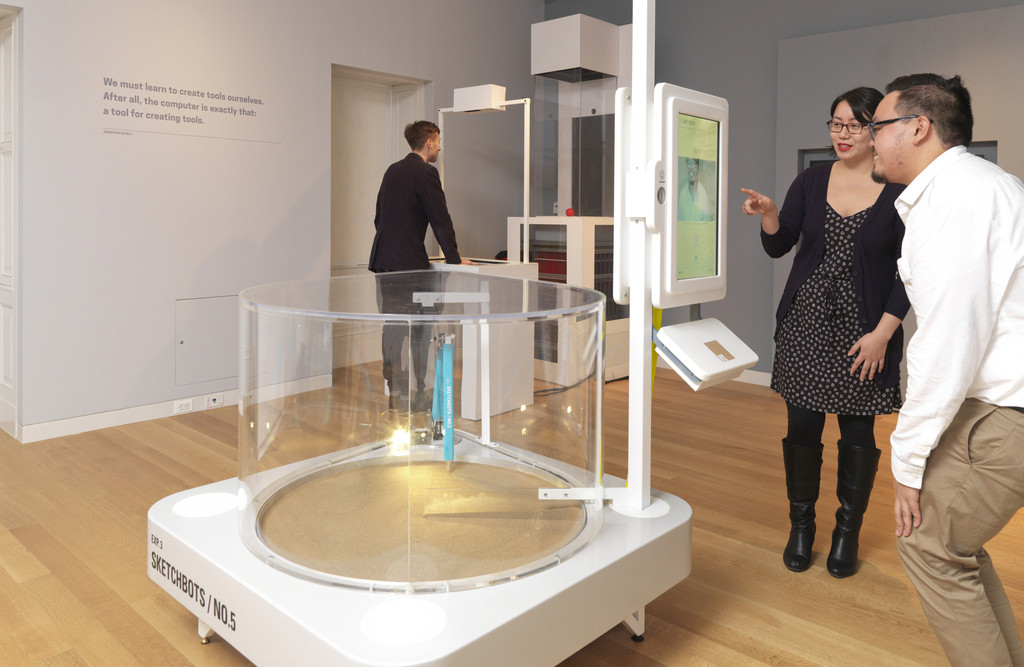There is a goldmine of digital materials in Cooper Hewitt’s permanent collection—rarities like prototypes donated by interaction design pioneer Bill Moggridge; gaming classics like the Game Time wristwatch (which you should really see in action! ); icons of product design like Apple’s iPhone; and artistic achievements in code by contemporary artist-designers like Aaron Koblin.

Digital Project, Ten Thousand Cents, 2007–08; Designed by Aaron Koblin and Takashi Kawashima; USA; processing, adobe flash cs3, php/mysql, amazon mechanical turk, adobe photoshop, adobe after effects; Gift of Aaron Koblin and Takashi Kawashima; 2014-41-2; Object Record
And we need your help! We are looking for two ultra-talented and fearless media spelunkers to dive into the collection and surface all of the computer, product design, and interaction design history within. We want you to help research and invigorate this part of the collection so that we can share it with the world. It’s a noble cause, and one that will help give museum visitors an even better experience of design at Cooper Hewitt.

One Laptop Per Child XO Computer, 2007; Designed by Yves Béhar, Bret Recor and fuseproject; injection molded abs plastic and polycarbonate, printed rubber, liquid crystal display, electronic components; steel, copper wire (power plug); H x W x D (closed): 3.5 × 22.9 × 24.1 cm (1 3/8 in. × 9 in. × 9 1/2 in.); Gift of George R. Kravis II; 2015-5-8-a,b; Object Record
Project Positions
We are hiring for two contract positions: Media Preservation Specialist and Time-Based Media Curatorial Assistant. The contractors will work together on the first phase of the Digital Collection Materials Project to survey and document collection items. Check out the official project announcement below to understand the full scope of the project.
To Apply
To apply for the Media Preservation Specialist or Time-Based Media Curatorial Assistant position:
- Read the official project announcement.
- Download the Request for Proposal for the position you wish to apply:
- Follow the Proposal Submission Guidelines outlined in the Request for Proposal.
- Submit your proposal to cooperhewittdigital@si.edu by December 20, 2016.
Looking forward to seeing your applications—we can’t wait to partner with you for this important work!

SketchBot (USA), 2012; Industrial Design by Universal Design Studio (United Kingdom); aluminum, plastic, assorted electrical components, javascript, html, css and python source files; H x W x D: 137.2 × 137.2 × 137.2 cm (54 × 54 × 54 in.); Gift of Google Inc.; s-g-1; Object Record
This project received Federal support from the Smithsonian Collections Care and Preservation Fund, administered by the National Collections Program and the Smithsonian Collections Advisory Committee.
